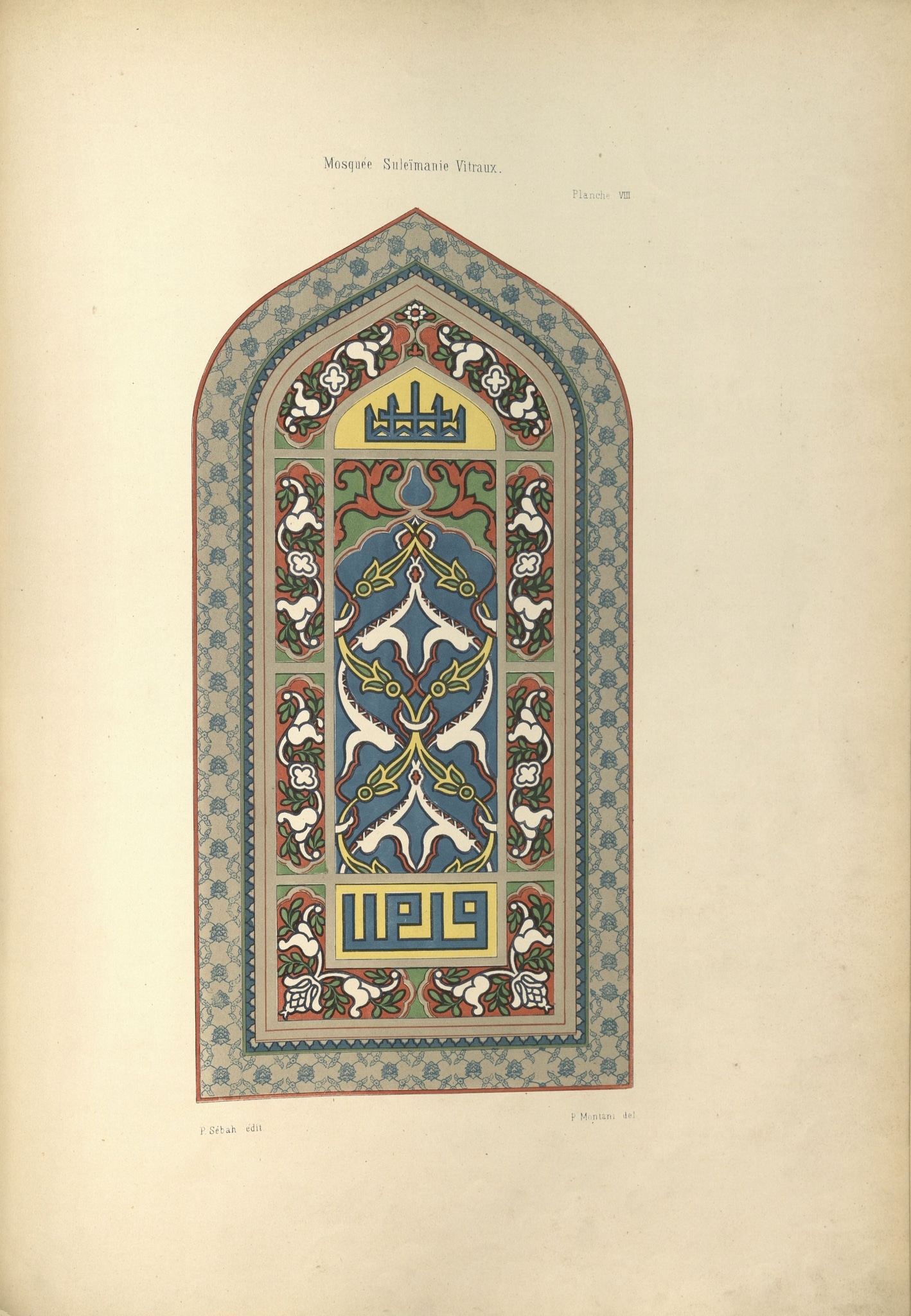Pl. VIII is a colour print based on a drawing by Pietro Montani that accompanies the chapter on the Sülemaniye Camii (Süleymaniye Mosque) in Marie de Launay, Die Ottomanische Baukunst / L’Architecture ottomane / Uṣūl-i Miʿmāriyye-i ʿUsmaniyye, Istanbul: Imprimerie et lithographie centrales (1873).
According to the caption, the illustration shows a stucco and glass window from the Sülemaniye Camii (Süleymaniye Mosque) in Istanbul. The pointed arch window is divided into several sections by thick grey lines. The central section is an upright rectangle, but with a polylobed arch at the top. It contains two tendrils growing symmetrically upwards in red with white half-palmettes intertwined with two symmetrical yellow palmette tendrils. The background is shown as plain blue surface. The spandrels are filled with red tendrils on a green background. Above and below the central section, there are small sections with stylized inscription in blue on a yellow background. The framing sections are occupied by elongated cartouches with trilobed ends and white tendrils and green foliage on a red background.
Only the stucco framing of the larger sections is indicated, by the grey lines; the more delicate stucco framing of the small pieces of glass is not clearly depicted.
The plate also includes part of the surrounding wall with a floral pattern.
48AA983112 · palmette ~ ornament - AA - stylized
48AA98312 · tendrils ~ ornament - AA - stylized
